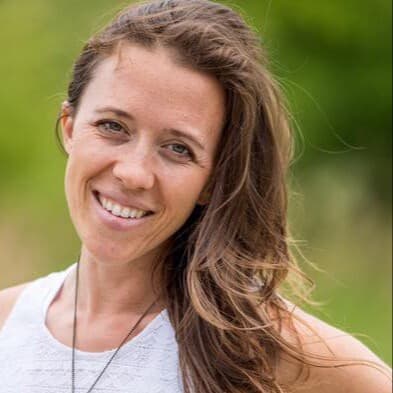14 Steps to a DIY Screenwriting Diploma

14 Steps to a DIY Screenwriting Diploma

I remember watching Jane the Virgin for the first time three years ago. Do you remember the flashback when Jane meets Rafael for the first time? If you’ve never seen it, just stick with me for a sec.
Rafael asked Jane about what she wants to be in her life. She replies, Well, it depends. Am I being practical or brave? He says, Practical. She says, I'm a teacher. Then he says, Brave. She says, I'm a writer…I have never said that out loud before! He smiles at her and leans in for a kiss, and whispers, Be brave.
That scene gave me chills and, although I didn't dare say it out loud, the spark that lit me up as a child burned a teeny bit brighter that day. I knew, somehow, I would be brave and claim the writer title, too. Fast forward to a few months ago when I decided to try my hand at writing a script. Or was it a screenplay? I had no idea at the time. That's how much of a noob I was (am I too old to say noob?).
I did a quick search for screenwriting diplomas and certificates. But did I want to go back to school? I'd lived an entire life already as an entrepreneur (and then the pandemic shut down my business…but that's a story for another day), was I really thinking of starting over again? I'd have to apply and then wait a year. But I had this burning passion and desire to learn all the things right now!
No, I decided, I wouldn't go back to school. I'd taught my children from home for twelve years, I knew I could teach myself about screenwriting. That's when the idea came into my head: why not create a DIY Screenwriting Diploma? It's also around the time an ad for Stage 32 popped into my Instagram newsfeed. Thank you, algorithms! This magical Stage 32 website was exactly what I needed to get started on building my curriculum.

How to Create Your Own DIY Screenwriting Diploma
1. Make a List of What You Want to Learn
Perhaps you want to know more about character arcs or maybe structuring your feature. Use your list to come up with core subjects.
2. Review the Curriculum for a Screenwriting Diploma/Certificate
Do a quick Google search for screenwriting diplomas in your area and check out the courses they offer. Take notes of any classes that sound interesting. If you find you're drawn to a few, write down their descriptions and add them to your list from above.
3. Set Up a Weekly Schedule
Use a Google doc and add the title Week One. Then make subheadings for things to Read, Write, and Watch. You will input your DIY curriculum (more on that in a sec) under these headings, which will be the start of your new weekly schedule.
4. Set Up a Daily Schedule
Your daily schedule will be the must-dos of your daily life. Even if there's a zombie apocalypse going on outside your office window, you will get these things done. For me, it's writing, reading, and interacting with others about writing. Most zombies are slow anyway, so you'll have time.
With the first four steps completed, you have the skeleton structure for your DIY Screenwriting Diploma. Now comes the fun part (well, it's fun for me): research! You're going to go through the fantastic Stage 32 resources and pop them into your weekly schedule.
It wouldn't be fair for me to tell you how to put it all together without sharing mine as an example, so here it is! The first week of my DIY Screenwriting Diploma.

Using Stage 32 for Your DIY Screenwriting Diploma
1. Search the Stage 32 Blog
With the list of what you want to learn, you'll now search the blog for articles to read. One of the things on my list recently was 'how to pitch.' I popped on the blog and scoured through the thousands of blog posts, picking out anything I found on pitching. From there, I copied the links to the blog post and pasted it into my Google doc with my DIY Screenwriting Diploma curriculum. In no time, I had a massive list of articles to read for a few weeks.
2. Book a Couple of Classes and Webinars
Here's where I want you to set a budget for yourself. Since you're not going to school, you're saving thousands of dollars, right? Or is that the way I justify things? Anyway, set yourself a monthly budget for classes, webinars, and script coverage/services.
3. Join the Writer's Room
If you haven't done that yet, go do it now. I'm serious. Ok, now that you've joined, CONGRATS! This is your screenwriting school. There are weekly live classes, almost daily writing cafes, plenty of classmates to chat up in the lounge, and weekly practice pitching sessions where you can practice your pitch when you've completed that beautiful script! Haven't finished it yet? Join the weekly sessions anyway because you learn so much from everyone else (I’ll see you in there).
4. Check Out the Vault
The Vault is a special area of the Writer's Room that has recordings of every class they've had over the years. These are included in your Writer’s Room membership (huge bonus!). Choose a couple each week and add them to your diploma curriculum.

Tips for Building Your DIY Screenwriting Diploma
1. Use Google & YouTube
If I couldn’t find it on Stage 32, I found it on Google or YouTube. Like formatting, which was the very first thing I wanted to learn about. That is, after I learned the difference between 'script' and 'screenplay' (spoiler: they are interchangeable).
2. Find an Accountability Partner
It can be hard to complete the work you've set up for yourself when you don't have a professor reminding you that your entire career hangs on finishing this one assignment. So find an accountability partner. Mine is a dear friend who I'll message and let her know what I'm up to that day or week. She doesn't even need to acknowledge my message, but what's important is that I've put it out there. And now I'm accountable.
3. Watch and Breakdown Movies and TV
Watch plenty of movies/tv shows and break down their structure as you watch them. This new skill will help you when you're writing your own. And once you've watched those movies/tv shows, add their scripts to your list of things to read.
4. Read Books, Scripts, and Industry Articles
I try to read 2 scripts every week. One will be from a movie/tv I watched the week earlier and the other, a short film script. There are plenty of sites listing scripts to read. Just do a Google search. When it comes to books, I'm never without one. Most I have on my Kindle (you'd be amazed how many screenwriting books are free on Kindle Unlimited). Find ones that interest you and make a list. Use that list as you would if you were in school: set goals for how many chapters you want to read each week from each book. And read one industry article each day from places like Variety or The Hollywood Reporter.
5. Take Advantage of the Community
Jump into the Stage 32 community lounges and introduce yourself. Take a browse through the various topics and start commenting. Build up your network of fellow screenwriters in the Writing Room lounge by attending the Writer's Cafes that take place almost daily.
6. CELEBRATE!
Set up designated terms or semesters for yourself and celebrate everything you've learned. Give yourself a graduation party, even. Actually… that's not a bad idea. You should plan a graduation party! Any ideas? Pop them in the comments. Mine would include chocolate.
My DIY Screenwriting Diploma
At the time of this writing, I'm entering week 8. I've completed my very first script (YAY!), have lined up coverage from execs through Stage 32, and have it in the hands of beta readers.
I've also got two tweens at home that I'm teaching, so it's not like I'm a full-time student. I'm doing this between my life responsibilities which is the best part of choosing a DIY screenwriting diploma.
I spend about 3 hours per day on my diploma. I find the time early in the morning when everyone is asleep and again in the evening. You'd be amazed at how much time you actually have in a day! Driving to work? Listen to a podcast or audiobook. Making dinner? Have a webinar playing while you cook. You can fit it in, I promise.

Resources
Some of my favorite resources are:
- Stage 32 (obviously)
- Save the Cat (I own all versions, but start with the first)
- The Screenwriting Life podcast
- The Writers Helping Writers thesaurus set by Angela Ackman and Becky Puglisi
- Any of Lisa Cron's books (meant for writers of novels, but still get you in the heads of your audience and explain how storytelling is influenced by the brain)
- Writing Movies for Fun and Profit (soooo funny)
If you're a newbie screenwriter like I was only a few months ago, I hope this article has empowered you to put together your own DIY Screenwriting Diploma. Now go out there and create the diploma of your dreams! And in those famous words by Rafael Solano, "Be brave." We will, Rafael. We will.
About the Author

Monica La Vella
Screenwriter, Producer
Before her inciting incident (the pandemic), Monica was an entrepreneur as the founder and event producer of one of Canada's longest-running plant-based food festivals. But writing has always been a part of her life. It was only natural for her to feel that pull into the unknown, and she used the pa...





